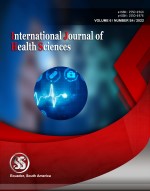Demographic analysis of profile of neurosurgical patients at tertiary care medical school in Eastern India
An institutional experience
Keywords:
Demographic Profile, Intensive care unit, Mortality, Neurosurgery, OutcomeAbstract
Background: Since becoming a distinct field of medicine, neurosurgery now admits some of the most frequent patients to the intensive care unit. The study's goal was to examine the characteristics of neurosurgical patients admitted to a level III mixed, medical-surgical intensive care unit in a tertiary hospital in Eastern India in order to determine the reasons for these patients' admissions, as well as their outcomes in terms of length of stay in the unit and mortality. Methods: An investigation was carried out in IMS and SUM Hospital, Bhubaneshwar following ethical approval from the institute's Institutional Review Committee. The study covered all patients with neurosurgical issues admitted to the ICU for the 12-month period from January 2021 to December 2021. Results: During the one-year study period, a total of 659 neurosurgical patients were admitted in the ICU. Among them 445 (67.53%) were males and 214 (32.47%) were females. Age wise distribution showed patients aged between 18 and 60 years to be the most common at 476 (72.23%). Sixty (9.10%) patients aged below 18 years, while 123 (18.66%) were aged more than 60 years. It showed that maximum patients had trauma 150(22.76%).
Downloads
References
Ariwibowo, M. F., Wahab, Z., Isnanta, R., & Isnurhadi, I. (2020). Physical evidence promotion on consumer decisions in using bowling sport services. International Journal of Social Sciences and Humanities, 4(3), 22–28. https://doi.org/10.29332/ijssh.v4n3.445
FA Onyekwulu, SU Anya. Pattern of admission and outcome of patients admitted into the Intensive Care Unit of University of Nigeria Teaching Hospital Enugu: A 5year review. Nigerian J Clin Pract. 2015; 18, 6; 775-779.
Ganapathy K. Neurosurgery in India: an overview. World Neurosurg. 2013. 1;79(5-6):621-8.
Mauritz W, Wilbacher I, Majdan M, Leitgeb J, Janciak I, Brazinova A, et. al. Epidemiology, treatment and outcome of patients after severe traumatic brain injury in European regions with different economic status. Eur J Pub Health. 2008; 18, 6, 575–580.
Meara JG, Leather AJ, Hagander L, et al. Global Surgery 2030: evidence and solutions for achieving health, welfare, and economic development. Int J Obstet Anesth. 2015
Meena AK, Prasad VS, Murthy JM. Neurological intensive care in India--disease spectrum and outcome. Neurol India. 2001; 49 Suppl 1:S1-7.
Mukesh M Gupta. Intensive care management of postoperative neurosurgical patients. In: Narendra Rungta, Rajesh Pande, Manish Munjal, Sudhir Khunteta, editors. Critical Care. JP Medical Ltd; 2015 Chapter 40; p.346- 353.
Nouira S, Roupie E, El Atrouss S, Durand-Zaleski I, Brun-Buisson C, Lemaire F, et al. Intensive care use in a developing country: a comparison between a Tunisian and a French unit. Intensive Care Med. 1998;24(11):1144-51.
Rincon F, Mayer SA. Neurocritical care: a distinct discipline? Curr Opin Crit Care. 2007; 13:115-21.
Roka YB, Ahmad SW, Shrestha M, Chaudhary A, Puri PR, Adhikari HB, et. al. Neurosurgical intensive care. Postgraduate Medical Journal of NAMS; 2010:10; 2; 62- 65.
Rosso A, Brazinova A, Janciak I, Wilbacher I, Rusnak M, Mauritz W, et. al. Severe traumatic brain injury in Austria II: epidemiology of hospital admissions. Wien Klin Wochenschr. 2007; 119:29-34.
Sharma MR. Critical Care in Neurosurgery in Developing Countries. Journal of Institute of Medicine, 2013; 35(2): 92-100.
Suryasa, I. W., Rodríguez-Gámez, M., & Koldoris, T. (2021). Get vaccinated when it is your turn and follow the local guidelines. International Journal of Health Sciences, 5(3), x-xv. https://doi.org/10.53730/ijhs.v5n3.2938
Tan WT, Choy JM, Foo JM. A 5-year profile of trauma admissions to the surgical intensive care unit of a tertiary hospital in Singapore. Ann Acad Med Singapore. 2010; 39:363-7.
Titov, I., Sedykh, K., Titova, T., Myroshnyk, O., Giacomuzzi, S., Ertl, M., & Rabe, M. (2022). Psychosocial implications of the COVID-19 pandemic on the employees of the automotive industry in Germany. International Journal of Health Sciences, 6(2), 738–757. https://doi.org/10.53730/ijhs.v6n2.7975
Published
How to Cite
Issue
Section
Copyright (c) 2022 International journal of health sciences

This work is licensed under a Creative Commons Attribution-NonCommercial-NoDerivatives 4.0 International License.
Articles published in the International Journal of Health Sciences (IJHS) are available under Creative Commons Attribution Non-Commercial No Derivatives Licence (CC BY-NC-ND 4.0). Authors retain copyright in their work and grant IJHS right of first publication under CC BY-NC-ND 4.0. Users have the right to read, download, copy, distribute, print, search, or link to the full texts of articles in this journal, and to use them for any other lawful purpose.
Articles published in IJHS can be copied, communicated and shared in their published form for non-commercial purposes provided full attribution is given to the author and the journal. Authors are able to enter into separate, additional contractual arrangements for the non-exclusive distribution of the journal's published version of the work (e.g., post it to an institutional repository or publish it in a book), with an acknowledgment of its initial publication in this journal.
This copyright notice applies to articles published in IJHS volumes 4 onwards. Please read about the copyright notices for previous volumes under Journal History.
















